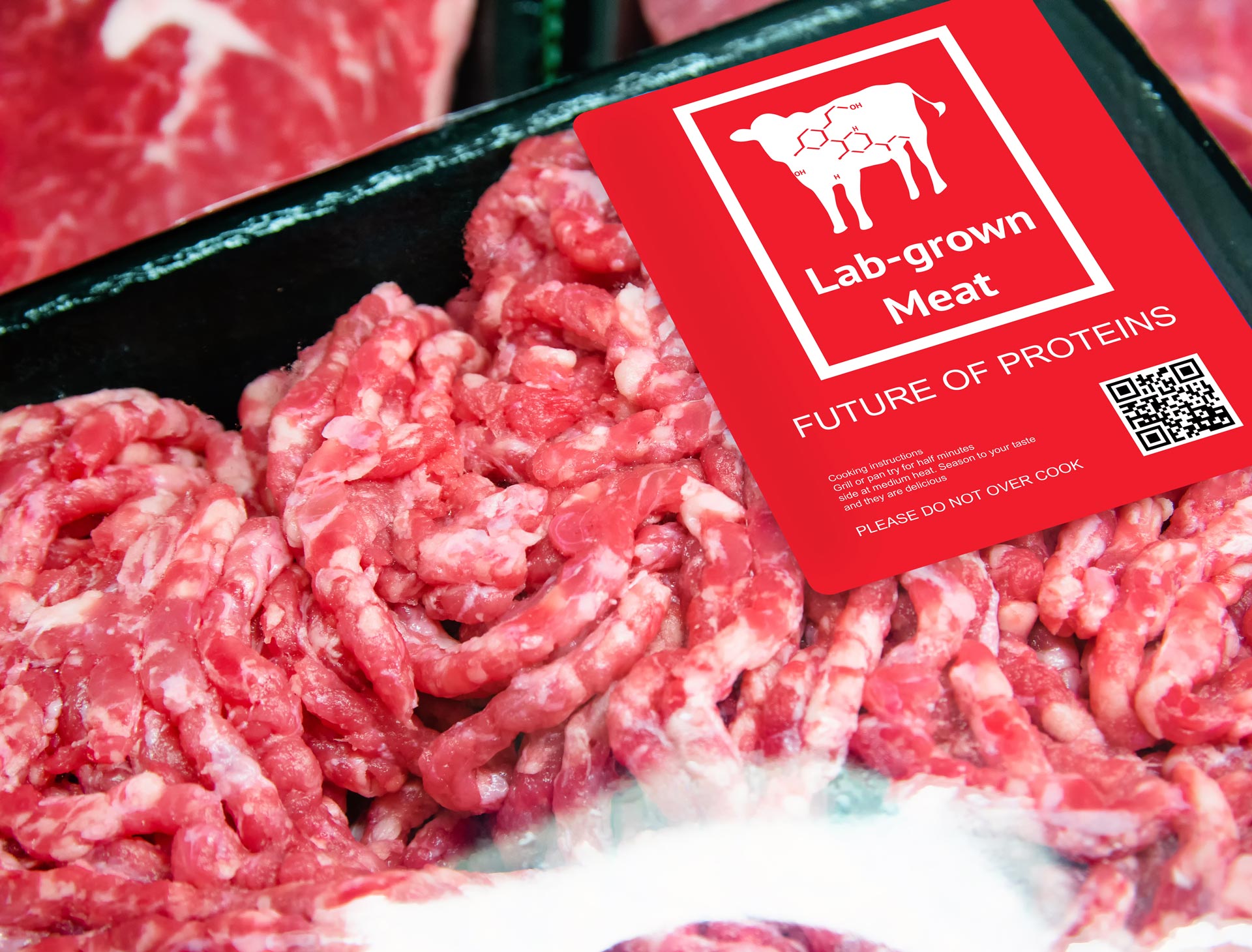
Cultured or lab-grown meat has the potential to significantly reduce the carbon footprint of the food industry, but only if consumers are willing to eat it. And according to new research, the right marketing is essential to widespread lab-grown meat acceptance.
In findings published today in the journal Frontiers in Nutrition, researchers have found that the three most common ways to present cultured meat to the public – as an innovation with social benefits, as a high-tech revolution or as a product very similar to conventional meat – illicit very different reactions from the public.
Concerningly, the most commonly presented image of lab-grown meat – as a high-tech product – is not effective at winning consumers round.
“We found that those who encounter cultured meat through the ‘high-tech’ frame have significantly more negative attitudes towards the concept, and are much less willing to consume it,” explained study lead author Christopher Bryant, from the University of Bath.
“Worryingly, cultured meat as a ‘high-tech’ development has been a very dominant frame in early media coverage, which frequently features ‘science themed’ photos such as meat in a petri dish in a lab. This may be causing consumers to develop more negative attitudes towards cultured meat than they otherwise might.”
‘Clean meat’ vital to lab-grown meat acceptance
By contrast, marketing it as a product with social benefits was found to significantly improve public lab-grown meat acceptance, with the researchers suggesting it should be described as ‘clean meat’.
How well do you really know your competitors?
Access the most comprehensive Company Profiles on the market, powered by GlobalData. Save hours of research. Gain competitive edge.

Thank you!
Your download email will arrive shortly
Not ready to buy yet? Download a free sample
We are confident about the unique quality of our Company Profiles. However, we want you to make the most beneficial decision for your business, so we offer a free sample that you can download by submitting the below form
By GlobalData“We’d love to get away from the ‘lab-grown’ label,” said Natalie Rubio, a researcher from Tufts University.
“When cultured meat is ready to go, it won’t be produced in a lab at all but in a food processing plant just like existing meat alternatives and other foods.
“Our suggestion to news media and startups is to normalise not only the name but the whole concept of clean meat – which as the same taste, nutrition and basic building blocks as conventionally farmed meat. Hopefully, the texture and price will soon match too.”
Frankenfood fears
The researchers are particularly concerned about the technological links with lab-grown meat leading to it illiciting similar fears to genetically modified (GM) crops, which were the subject of a moral panic in the 90s around the idea of so-called ‘frankenfoods’. This led many members of the public to wrongly assume such foods posed a risk to their health.
“Extensive research has shown that media coverage of GM foods had a significant negative impact on public perceptions of, and behaviour towards, the technology,” said Bryant.
“Surveys show hesitancy towards cultured meat centers around its perceived ‘unnaturalness’, which can lead to concerns about food safety.
“As most people have so far heard little or nothing of cultured meat, this is a crucial time to assess how the framing of this innovation can impact consumer perceptions.”
Read more: Meat the revolution: Are we witnessing the decline of meat eating?






